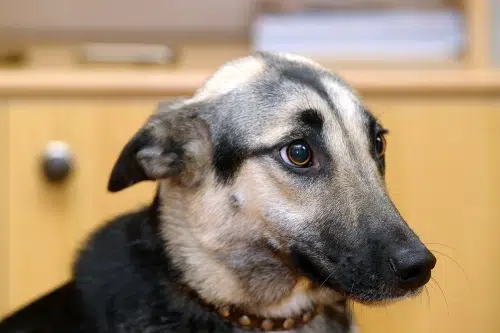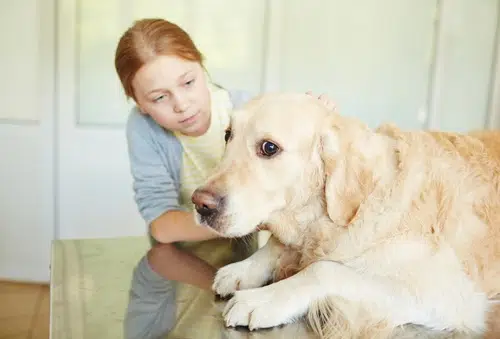Home » Blog » Pet » Pets: Understanding Them » Is My Dog Afraid? Decoding Dog Body Language
Categories
Tags
animal welfare
breed profile
buying a car
buying a pet
Car
car accessories
car care
car features
car insurance
Car safety
car sales
car service
cat
cat behaviour
cat body language
Cat Breeds
cat food
cat insurance
comprehensive car insurance
Dog
Dog Behaviour
dog body language
Dog Breeds
dog food
Dog Insurance
dog training
eco friendly cars
Kitten
New Car
pet accessories
pet activities
Pet Adoption
pet breeders
pet days of the year
pet fun stuff
Pet Health
pet insurance
pet parenting
Pet Safety
pet services
Puppy
rescue pets
road safety
road trip
safe driving
Recent Blog:
Facebook Posts
1 day ago
Growing old sometimes means we can’t take care of pets anymore. Find out some advice on what to do when this happens:![]()
![]() Senior Pet Parents – Contingency Plans for Your Pet – bit.ly/44bzwkS
... See MoreSee Less
Senior Pet Parents – Contingency Plans for Your Pet – bit.ly/44bzwkS
... See MoreSee Less
Senior Pet Parents' Contingency Plans for Pets
www.pd.com.au
Sometimes senior pet parents need more downtime. For older pet owners, this can be tricky to navigate if their dog or cat is full of beans and wants to3 days ago
Before you rev up the engine, let’s run through a checklist of things to do before starting your car. Not only do these steps ensure your safety (and that of others around you), but they also help in maintaining your vehicle's longevity.![]()
![]() Driving Tips: Your Checklist Before Starting Your Car -
... See MoreSee Less
Driving Tips: Your Checklist Before Starting Your Car -
... See MoreSee Less
Driving Tips: Your Checklist Before Starting Your Car
www.pd.com.au
Heading out for a drive? Hold up a second! Whether you're dashing off to work, running errands, or embarking on a road trip adventure, there are a few1 week ago
Are intestinal worms setting up camp in your dog’s gut without paying rent? Here’s how to spot the main culprits and get rid of them too:![]()
![]() Preventing, Identifying and Treating Intestinal Worms in Dogs - bit.ly/43YjCKu
... See MoreSee Less
Preventing, Identifying and Treating Intestinal Worms in Dogs - bit.ly/43YjCKu
... See MoreSee Less
Preventing, Identifying and Treating Intestinal Worms in Dogs
www.pd.com.au
Intestinal worms, such as roundworms in dogs are one of the least glamorous topics on the planet. These intestinal parasites that basically use our dogsIs my dog afraid even though I think he’s happy? Other than those joy-demonstrating moments of extreme tail wagging, how can you tell? Perhaps dogs show their fear through some secret dog Morse code, with special signs to look for…
If so, what are they, and how do you decipher them?
In short, the answer is yes, there are signs. Let’s uncover how to decode these canine cues.
Is my dog afraid: reading the cues
Have you ever gone up to pat a dog only to be barked at, or even bitten? If so, you’ll know how startling this can be. And believe you me, the dog was most likely even more startled than you were. Which is why they reacted like they did.
Firstly, you should never pat a dog that isn’t yours. You never know what behavioural issues they have and, even if they’re one of the kindest dog breeds, they may not want a stranger to pat them.
Having said that, if you pay close attention you can learn how a dog shows you they’re feeling afraid. This also means: leave me alone, I don’t want to say hello right now.
Here are three watchpoints to begin with:
1. Sign language vs body language
Human sign language is all about the hands. But dogs don’t have thumbs, so instead, they rely on their whole body to tell the story. Because of this, it’s important to focus not just on a dog’s facial expression when you want to know how he’s feeling.
When you’re learning how to speak dog look at his whole body. That includes his mouth, eyes, ears, posture, paws, and tail.
2. Consider the context
Although our furry friends have evolved from wolves and still have their fearsome fangs, at heart they’re just sociable pups. Despite this natural exuberance (more apparent in some than others), completely innocuous things can frighten them.
For example, a crying baby or the shrieks of people playing sport can be completely unnerving to your pooch. These high-pitched sounds are louder for dogs and can send mixed signals. Did you know dogs can hear a sound up to three times stronger than we do?
If you’ve ever startled at the loud sounds of kids playing, just imagine how your dog feels.

3. A dog’s breed makes a difference
Since dogs first became our BFF’s we’ve bred them for different traits, like floppy ears, bushy tails and more. So, while you’re learning to read your dog’s signals, remember that it may give extra cues based on its breed.
For instance, when a dog is scared or threatened, it may flatten its ears against its head. But a dog whose ears are permanently floppy won’t cue the same way because it can’t!
You should always pay attention to a dog’s whole body. If it can’t signal with its ears it will signal some other way, like lifting a paw or licking its nose.
What is my dog scared of?
Here’s a short list of scenarios where your dog is likely to feel the heebie-jeebies. There are plenty more where this came from:
- Being on their own: Dogs can get pet separation anxiety and feel fear when they’re lonely. They’re naturally pack animals and will usually start needing their human after four hours of being apart
- Road trips: Travelling with pets means new sites, sounds and smells. Your canine counterpart’s senses will be on overdrive. As a result, they may experience anxiety and fear.
- Loud sounds: Loud sounds like thunder, music or traffic can hurt a dog’s sensitive eardrums, causing real fear. Pet safety and fireworks are also on the watchlist, especially during holidays.
- Vet visits: A visit to the doctor can make even the bravest human a bit squeamish. So, you can imagine how your dog’s ‘nervous-radar’ may be sending them a loud signal. They’ll be able to feel the anticipation before they even reach the reception area – they just won’t know why.
- Strangers: Your pooch sees and smells you every day, and you’re part of their pack. So, it’s not surprising that when a member of another pack (like an unknown neighbour, friend or relative) comes barging in, your dog can take fright. Your pooch may well wonder what an outsider is doing in their/your den!
- You: No one wants to be the cause of fear in their beloved pooch, but this can happen. We can sometimes do things that unintentionally frighten our pup. Further, they can sometimes feel our fear about something. Our pets are finely attuned to our feelings, so when we’re sad, scared, or angry our pets can feel this and often experience fear too.
Rescue dogs can have an even harder time. They may be traumatised from one or more experiences they had before meeting you. As a result, they can take longer to learn your mannerisms or feel secure around you.
If your pooch is a rescue, just give them love and time. Dogs are essentially trusting animals; even if their trust has been broken, they want to learn to feel safe again. Read these great ways to help with dog anxiety.

Signs that your dog is afraid
As you decode your dog’s sign language when wondering ‘is my dog afraid’, note this handy list of things dogs may do to show they feel anxious or afraid:
Don’t let any of these behaviours go unchecked. If they become a habit rather than an isolated incident, consider a dog behaviourist or puppy school. Socialising your dog with canine buddies or spending time training can help release excess energy and teach positive responses.
- Flattening ears against their head
- Tucking their tail between their legs
- Licking their lips
- Yawning
- Avoiding eye contact
- Whining and whimpering (which could also mean they’re hurt)
- Growling or barking
- Panting
- Pacing
- Trembling and shaking
- Drooling
- Raised fur (much like when a cat is scared)
- Showing the whites of their eyes (unless their eyes are normally like this due to their breed)
- Toileting outside their litterbox or more frequently than normal (note this can also happen if a dog is feeling sick)
- Destructive behaviour (think eating lounge furniture, barking at passers-by or undue aggression)
You can also speak to your vet about a natural calming medicine, such as a pheromone spray. Pheromone sprays are said to mimic the smell of a mother dog and help pets to feel secure.
Dog fear and anxiety – other underlying causes
Ask your vet to check that your pup’s behaviour isn’t the result of an underlying wound or illness. If you haven’t already, consider taking out a pet insurance plan beforehand to help cover vet costs and medication.
Depending on which dog insurance plan you choose, with PD Insurance you have the option of a defined annual limit of between $5,000 and $20,000. That way, you can worry about your pup and not your back pocket.
Share On:




